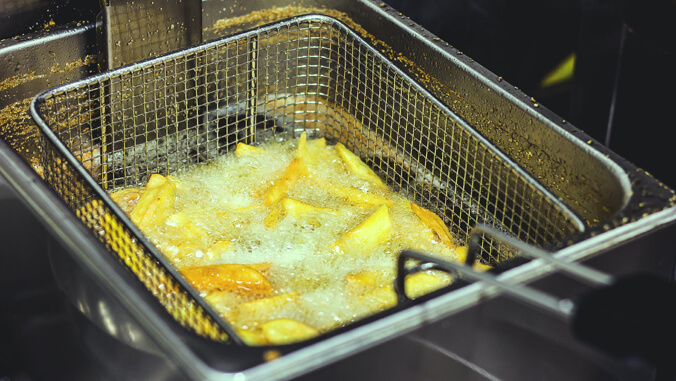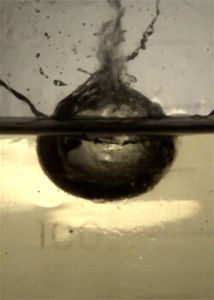
How do cooks determine if their pan of oil is ready for deep frying? One time-honored technique involves dipping a wooden spoon or chopstick into the oil, and if it starts steadily bubbling, the oil is ready. If the bubbles are too vigorous, the oil is too hot. Likewise, If there are not enough bubbles, the oil is too cold.
A team of international researchers, including John S. Allen, an associate professor in the Department of Mechanical Engineering in University of Hawaiʻi at Mānoa’s College of Engineering, further investigated these oil bubbles and the sounds they emit. Research revealed complex physics concepts, with wider implications in the topic of aerosols—particles in the air—including respiratory droplets associated with the spread of the COVID-19 virus.
Exploding experiments
Initial experiments involved testing droplets of water and droplets of batter suspended on the tip of a chopstick. The water droplet exploded upon contact with the oil, however, the batter droplet formed bubbles on its surface upon contact.
The researchers then used a small piece of paper moistened with water as a model to investigate when food is placed in hot oil. They discovered that the amount and type of bubbling depended on the amount of water and the temperature of the oil.
These experiments led to a series of more controlled studies using a setup that allowed water droplets to be added to hot oil from an overhead wire. A high-speed camera and synchronized microphone were used to quantify bubble dynamics and associated the sizzling sounds upon explosion.
Bubble discovery

Researchers discovered three distinct types of bubble events: explosion cavity, elongated cavity and oscillating cavity.
- Explosion cavity: forms when a water droplet enters the hot oil and undergoes a microexplosion due to the sudden temperature increase, forming a vapor bubble that ruptures the surface.
- Elongated cavity: forms when a water droplet explodes without rupturing the surface.
- Oscillating cavity: forms when the water droplet is quickly submerged. It undergoes a multistep explosion process, and begins to oscillate before breaking up into numerous smaller bubbles.
Acoustic analysis
The sounds revealed that the three cavity types have different acoustic characteristics. The scientists said that further research into the different sounds can lead to a better understanding of how aerosols are produced, based on the sounds they emit.
“This interdisciplinary research is notable with respect to both the fundamental fluid dynamics and acoustics, as well as its practical implications for food science,” Allen said. “Acoustic detection and classifications of droplets and aerosols is a rapidly evolving field, and may have practical implications with public impact, for example, the respiratory droplets associated with the spread of COVID-19.”
The research findings were published in June 2022 in a special issue of Physics of Fluids.
—By Marc Arakaki

